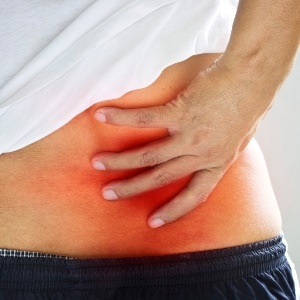
Treatment for a sport injury depends on whether it is an acute or chronic injury. The one thing you should do however is immediately stop doing the exercise or sport which is the cause of your injury until you have received adequate treatment.
If the sports injury is causing you severe pain, swelling, numbness, if you can’t stand on it or put weight on it, and if there is any joint abnormality, then you need to seek treatment immediately.
Otherwise home treatment, using the RICE method, should suffice until the symptoms subside.
The RICE method involves:
Rest: Keep the weight off the affected joint or limb, using a crutch or walking stick if necessary.
Ice: Use an ice pack (frozen veg or a proper cold pack from the pharmacy) on the injured area for 20 minutes, several times a day. Don’t exceed the 20 minute limit.
Compression: Use a bandage or compression device to put an even of amount pressure on the injured area. This helps reduce swelling.
Elevation: Keep the injured area elevated above heart level to reduce swelling.
Types of injury and treatment
Cuts: First try stop the bleeding using a cold compress or bandage and apply pressure to the area until bleeding has ceased. Deeper cuts may need stitches.
Head injuries : Any type of head injury should be taken seriously injury has occurred the head should be stabilised until a medical professional can assess further.
Neck and spinal injuries: Injuries to the neck or spine must also be taken seriously and treated as emergency cases. The neck and spine should be stabilised immediately and the person must be kept very still.
Medication
Taking medication to relieve pain and/or swelling is usually also advisable if the injury is not too severe. However, as all medications can have side effects, make sure you check with your doctor or pharmacist before taking anything.
Nonsteroidal Anti-Inflammatory Drugs (NSAIDs) are over-the-counter medications include aspirin and ibuprofen and vary in strengths.
Injections
Cortisone injections help reduce inflammation and pain after an injury. Cortisone injections are most commonly used for the treatment of arthritis, tennis elbow, shoulder bursitis and carpal tunnel syndrome.
They generally take up to 48 hours to working and the effects can last several weeks.
Surgery
In some cases, surgery is needed to repair torn connective tissues or to realign bones with compound fractures. The vast majority of sports injuries, however, do not require surgery.
Rehabilitation
Recovery and rehabilitation from sports injuries should be gradual and is intended to assist the injured body part to regain normal function again. Early rehabilitation includes getting the injured person moving again with gentle range-of-motion exercises and light stretching and strengthening exercises.
Progression is the key principle and depending on the severity of the injury this can take up to a few months.
The point is to avoid pain at all costs and not to return to your previous exercise or sport until full range of motion and strength is regained in the affected area.
Rest
Before, during and after rehabilitation, adequate rest is a vital component to the healing process.
Finding the balance between rest and rehabilitation will ensure that the injury has sufficient time to heal with enough therapeutic exercise to regain its strength and range of motion so when you return to your exercise or sport you will not suffer a recurring injury.
Immobilisation
Immobilisation is a done immediately following an injury by a trainer or paramedic and involves reducing movement in the area to prevent further damage, reduce pain, swelling, and muscle spasm and helps the healing process begin. Slings, splints and casts, are all used to support and protect injured bones and soft tissue.
Hot and cold therapies
Cold treatments in the form of ice packs are applied to many different types of injuries involving muscle strains, sprains and soft tissue damage. The ice can help reduce swelling and inflammation and numbs the area to ease pain. It can also lessen bleeding in the tissues surrounding the injury.
However it is important t ensure the icepack is wrapped in something such as a cloth, before being placed onto the skin. Icing for longer than 20 minutes is not advisable as this can damage the skin. It is generally used for only the first 48 hours after injury.
Ice packs must not be used on the left shoulder of anyone who has heart problems or diabetics.
Heat treatments (thermotherapy) are used to ease muscular pains and help to increase blood flow to the affected area by causing the blood vessels to expand. This is why heat therapy is not advisable immediately after an injury as this will increase body temperature and increase bleeding.
Heat treatment is best used 48 hours following the injury and during the rehabilitation process.
Common types of heat treatment include heat pads, deep heat creams and lotions, heat lamps and hot water bottles.
The heat pack should be warm and not hot and should be avoided on damaged skin or on diabetics.
Read more:
References
Handout on Health: Sports Injuries: NIH Publication No. 13–5278; http://www.niams.nih.gov/Health_Info/Sports_Injuries/default.asp#ra_
Sports Injuries; Mediline Plus ( 2 October 2014); https://www.nlm.nih.gov/medlineplus/sportsinjuries.html#summary
Sports Medicine Information: (2009) Sports injury treatment; http://www.nsmi.org.uk/articles/sports-injury-treatment/surgery.html




 Publications
Publications
 Partners
Partners
















